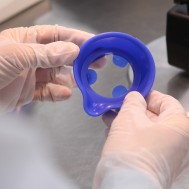As the medical industry advances, medical equipment and the components they are made of must become more advanced as well. New discoveries in technology and medicine often mean that medical devices need to withstand exposure to heavy use, harsh chemicals, and wide temperature ranges.
Demands for reliable equipment in the industry are only increasing, which is why it is critical to select the correct seals for use in every life-saving medical device. Read on for the information you need about medical grade sealing solutions.
Applications
From medical pumps, IV components, feeding devices, and implant materials, to lab equipment, industrial storage and transportation systems, and temperature control devices, medical seals are relied upon in just about every aspect of the medical industry.
The purpose of these seals is to protect both people and devices from potentially wasteful or hazardous leaks. They are utilized whenever liquids or gases are pumped, drained, transferred, contained, or dispensed.
Production
In order for o-rings and sealing devices to be used in medical applications, they must first meet strict requirements, including:
- Pharmaceutical Extraction Protocols
- FDA USP Class I – VI
- ISO 10993
Since most medical devices must be sterilized, especially those that come in direct contact with patients, manufacturers must use a certified cleanroom to ensure that no dirt, debris, or unfiltered air contaminates the devices during production.
Apple Rubber uses a Class 10,000 ISO 7 certified cleanroom to develop and manufacture medical seals. This guarantees that our sealing solutions come from a clean environment that minimizes potential contamination from airborne and surface particles, oil and gas, or static electricity, all of which can diminish the effectiveness of a medical device.
Biocompatibility
Many medical devices must come into contact with living tissue and other vital substances like bodily fluids, drugs, and medical fluid. Biocompatibility means that the properties of a given material will not give off a (potentially harmful) reaction in response to a living tissue. It is critical to assess the biocompatibility of a seal and choose a material for it based on its intended application.
Materials
Material selection is key in creating a seal that can withstand critical environments and won’t fail under pressure. Every seal should be compatible with the materials it will be sealing against. In order to choose the right seal, you need to first understand the application at hand. Factors to consider include:
- Potential contact
- Temperature conditions
- Motion
- Pressure
- Longevity
Medical seals must demonstrate resistance to harsh, toxic chemicals. This is achieved by manufacturing with elastomers possessing the highest performance and quality. For this reason, Apple Rubber medical grade seals use Liquid Silicone Rubber, Fluoroelastomer, and Ethylene-Propylene. These elastomers have improved chemical resistors, excellent heat resistance, and low permeability to gas.
It is always crucial to consider the impurities of a sealing material. Over time, impurities can leach out in the form of toxic or carcinogenic matter. In medical applications where devices and seals are often directly in contact with human tissue, and sometimes implanted, it is critically necessary to be aware of the potential toxicity of a material. For this reason, engineers should choose a sealing material with few to zero impurities.
It’s more important than ever that medical seals perform under pressure. Apple Rubber is proud to provide trusted, quality sealing solutions for medical applications across the industry.
Want to learn more about medical seals?
Contact an engineer today.
